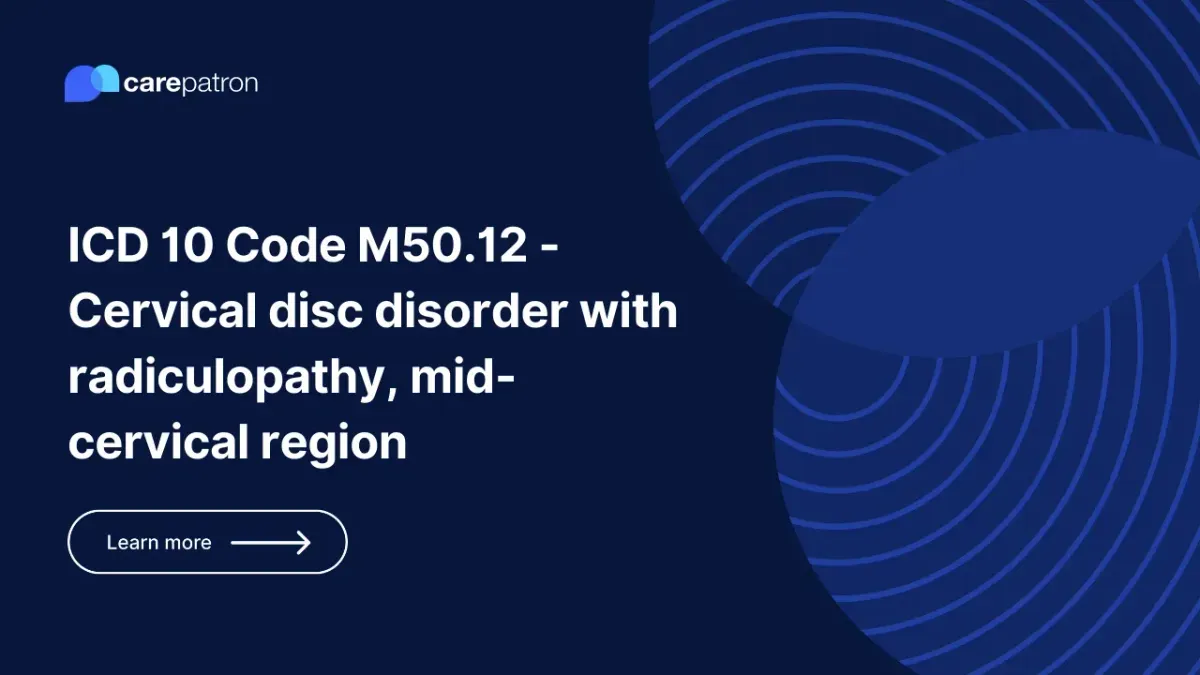
M50.12 – Cervical disc disorder with radiculopathy, mid-cervical region
M50.12 - Cervical disc disorder with radiculopathy in the mid-cervical region. Find causes, symptoms, and treatment options for this condition.
Use Code
EHR and practice management software
Get started for free
*No credit card required
Free
$0/usd
Unlimited clients
Telehealth
1GB of storage
Client portal text
Automated billing and online payments
